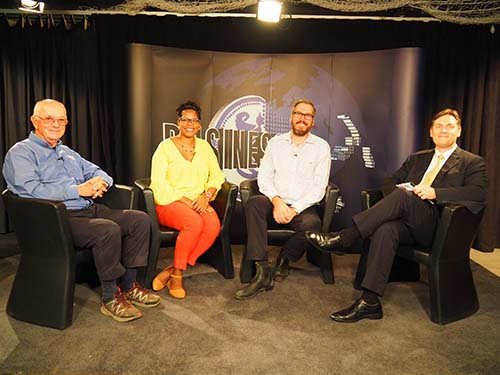Episode 2 of ‘Business Advantage Boardroom’: manufacturing in PNG
For episode 2 of ‘Business Advantage Boardroom’, Business Advantage’s Andrew Wilkins discusses the opportunities and challenges of manufacturing in PNG.
‘Business Advantage Boardroom’, a co-production of Business Advantage International and EMTV, was broadcast in EMTV’s ‘Business PNG’ TV program on 21 February 2017. It is available online here.

Foreign exchange shortages open up opportunities for PNG manufacturers
The difficulty in getting foreign exchange is making goods made in Papua New Guinea more attractive, local manufacturers tell ‘Business Advantage Boardroom’. But a lack of protection against cheap overseas competition remains a problem.
‘We have clients who don’t want to go through the hassle of getting the foreign exchange,’ says Frank McQuoid, Chairman of steel fabricator, Steel Industries. ‘They know when they come to our company they can pay for their product in PNG kina.’
‘My competition from Fiji you hardly see on the shelves now,’ observes Ernestine Maxtone-Graham, founder of MaxtoneHaus, a company that makes beauty products from PNG-produced coconut oil.
Chey Scovell, Chief Executive of the Manufacturers Council of PNG agrees PNG’s currency situation is creating gaps in the market for local manufacturers:
‘A lot of the fast-moving consumer goods (FMCGs) are where the local manufacturers are really going gangbusters—and smallgoods manufacturers as well.
‘Saveloys have had a big kick as well, although not so much because of the foreign exchange.’ Scovell says lamb flap prices, ex-New Zealand, have, in 18 months, had a fourfold increase in price.
‘People are making saveloys in PNG. We have five new indigenous manufacturers located throughout the Highlands. That is something we have never really had before: people taking value-added and manufacturing industries of a significant scale into the heartland where people are. It is really positive.’
